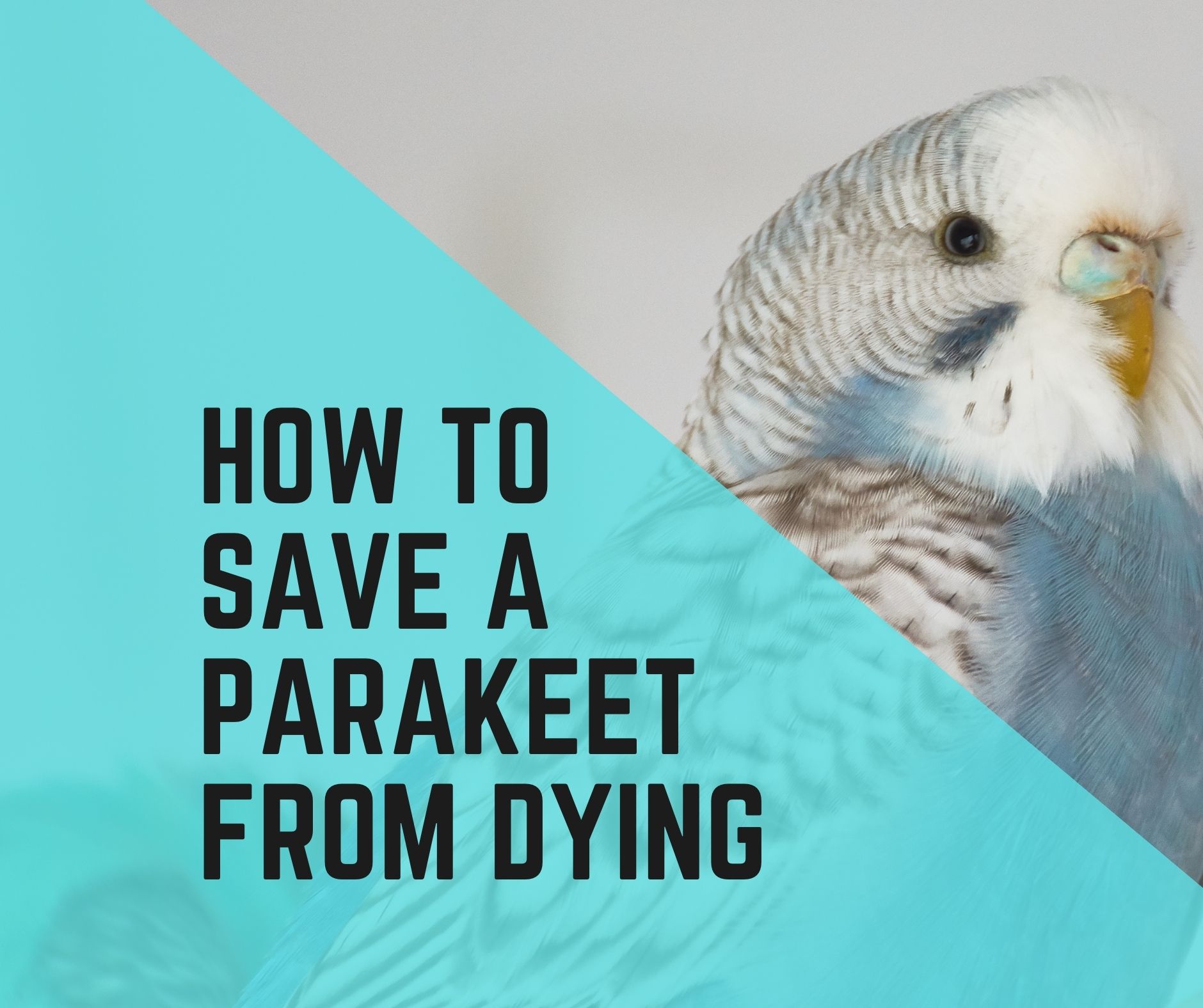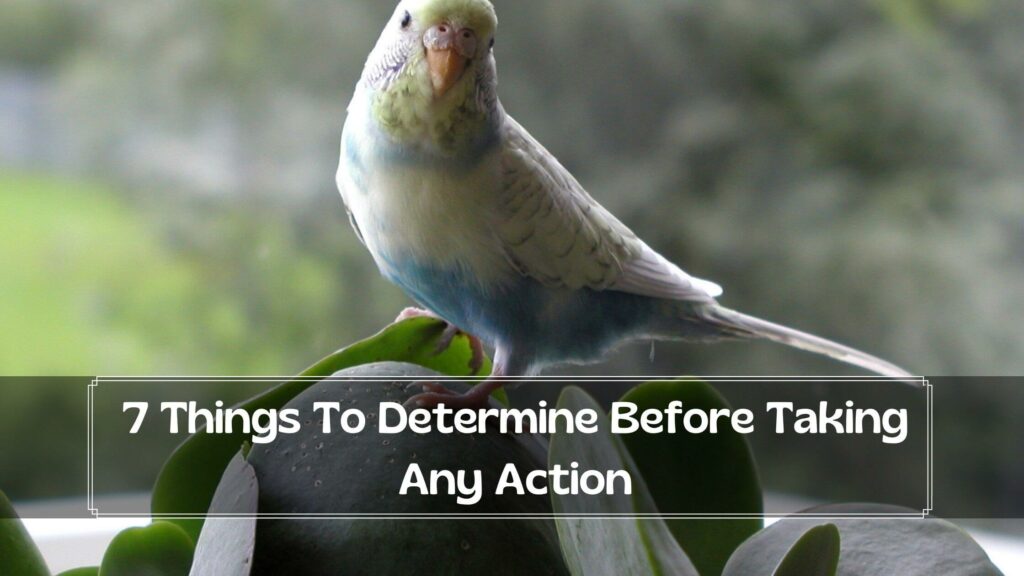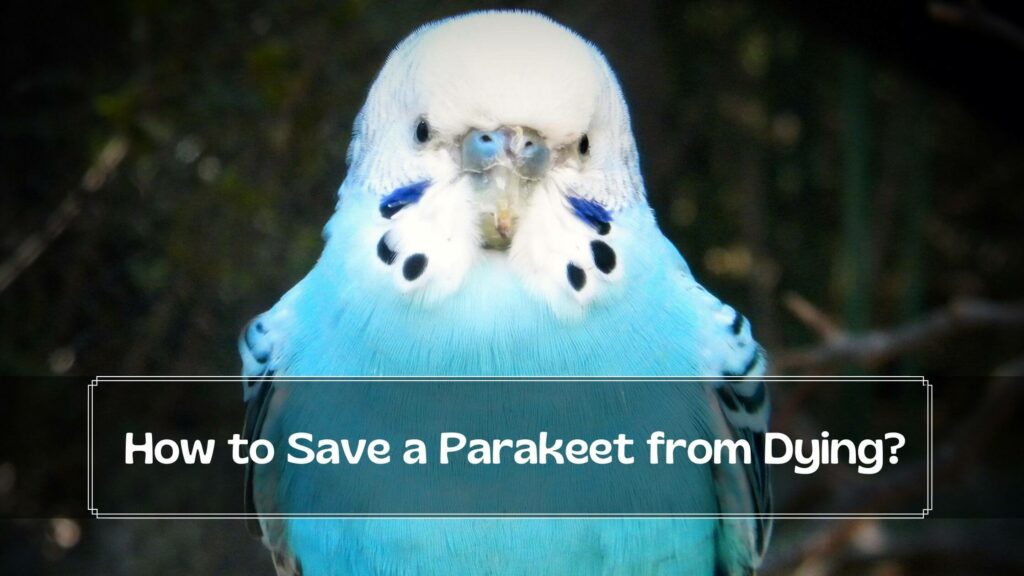
People often come across baby birds lying on the ground as they walk along the road and come close to the bushes. Being sympathetic to the bird, we often can’t save them.
If you happen to find an injured parakeet, you might want to know how to keep a parakeet from dying. This article will help you understand what you can do to save or relieve an injured parakeet. Also, the article should be well followed to know the exact method of keeping an injured parakeet.
7 Things To Determine Before Taking Any Action

Check The Local Laws.
Make sure to know and cross-check the local laws. In many cases, common people often pick up the bird lying in front of them and bring it home to take care of. In the United States, some local wild wildlife conservation law forces taking any fallen parakeet home without a wildlife rehabilitation licence is illegal.
If you want to save yourself from being fined, be aware of this type of local law. However, it doesn’t mean that you should leave the injured Parakeet as it is.
Find Out Where & How Bad The Injury Is.
The first thing you should do is find out how much the Parakeet got hurt. After that, you can know the local law you need to determine. It is necessary to examine your parakeet body carefully to figure out where the injury is serious.
Bad Signs.
If you notice your Parakeet closing its eyes for a while, understand that they are in very bad condition. Additionally, any sick or tired parakeet will also need help from you.
Check For Blood Stain or Clot.
If you notice any bloodstain on your Parakeet or blood clot in any part of its body, bring it to the nearest veterinarian as soon as possible. Make sure to check this species before getting them to a veterinarian because not all pet birds or wild birds are accepted. Some of them are flagged too.
Types Of Injured Birds.
In the park or when walking, you will mostly encounter two types of birds. One is a baby bird or fledgling bird that has recently fallen from its nest or an injured Parakeet due to predation.
Nestling Parakeets.
Nestling parakeets usually have few or no feathers at all. If you find such baby ones lying on the ground, get them to the local wildlife rehabilitation center. Being very young, baby parakeets are often unable to fly because of their small wings.
Fledgling Parakeets.
The fledglings are the second type of bird you will encounter most during a walk near bushes. Fledgling Birds referred to the young birds having a mixture of fluffy feathers newly growing like an adult one. Most beginners tend to be in the phase of learning to fly.
Sometimes, you might confuse yourself with the fledgling spelling Birds with the adult ones. The particular reason for this confusion is that their whole body is covered with feathers like an adult one.
However, most fledgling parakeets tend to be smaller in size than an adult. If you happen to find a fledgling Parakeet lying on the ground, the chances are they are escaping from its nests.
How to Save a Parakeet from Dying?

Sometimes, parakeets get injured during fighting and fall to the ground. Nestling usually tries to come out of the nest and, unfortunately, fault the land itself. Depending upon the age of your Parakeet, the bird may need your cooperation and help right now.
Whether you see a baby, fledging Parakeet without their mother lying on the ground or an injured one, you should help them by providing the best possible care you can.
8 Steps to Save a Parakeet from Dying
Step 1: Relocate The Dying Parakeet To A Safer Area
Before handling a Parakeet, ensure your hand is sanitized and well cleaned. It would help if you considered wearing gloves before picking up the Parakeet.
Now, using your clean hand, keep the bird in a safe place where they don’t encounter any bacteria or get infected. If bacterias enter your Parakeet’s body, the condition will get severe.
Step 2: Find Its Nest.
If you have found a dying parakeet outdoors, chances are it may have fallen from its nest on its own. The majority of the case tends to be with the baby and fledgling Parakeets.
If you happen to find its nest, gently place the injured Parakeet with the other babies. However, make sure you keep it in a space where the other birds have no problems.
Step 3: Take Care Of The Dying Parakeet.
If one of your hands is busy holding the injured bird, use your second hand in such a way that the Parakeet can rest well and feel as if it is in its nest.
Step 4: Offer Some Freshwater And Foods.
If your bird seems a little bit energetic, make sure it drinks some water and has some food. As Birds need to eat every few hours, keeping an injured parakeet, an empty stomach will never help.
Also, force-feeding is not recommended, especially if the Parakeet looks soft closing its eyes. Make sure to offer your Parakeet its favorite treat and food.
Interesting Further Reading
- How To Potty Train A Parakeet? (5 Easy Steps)
- 5 Ways How To Clip A Parakeets Wings Safely
- How To Get My Parakeet To Eat Fruits And Vegetables?
Step 5: Observe Your Little Feathered Friend Closely.
Check if your Parakeet starts looking dull and closing its eyes slowly. If this is the case, it’s a red signal, and you should visit the veterinarian as soon as possible. A bird closing its eyes may have only a few minutes left.
Plus, birds like parakeets can sense physiological crises and impending death very well. A dying parakeet’s eyes will look out of focus, and the feathers look random. Any discharge from your parakeet nose is also a sign your bird is dying.
Step 6: Create A Comfortable Bed For The Dying Parakeet.
It would help to make a comfortable bed for the injured Parakeet using basic materials. If you don’t have any basic materials for building a parakeet nest, you can also make one using a small basket or plastic container.
It would help make holes around the corner to allow the light air to enter. Now, you can also put some cloth in the container or basket (whatever you’ve at the moment). But avoid the terrific type of clothes that can get stuck with the parakeet nail.
If you don’t have any soft cloth, you can also use a tissue. Delicate papers also come in very handy for making comfortable bedding for small pets, including birds. Cover the nest using a towel so that the access light doesn’t reach the injured Parakeet.
Make sure to keep the nest size two-thirds larger than the Parakeet itself. Finally, ensure that the safety of the next is at the top, and your Parakeet will be unable to come out of it.
Step 7: Keep Your Parakeet And Its Nest Warm.
To help better, you should consider putting a bottle of warm water inside the parakeet nest, and it will provide enough warmth for the Parakeet to feel comfortable and secluded in a safe place.
Step 8: Monitor Its Health Status In Every Few Minutes.
It is crucial to monitor your dying Parakeet’s health status every few minutes. The Parakeet could be recovering or losing its consciousness. If there is no sign of recovery and your Parakeet is losing consciousness, consider finding a rehab.
FAQ
Wrapping Up
So far, we have discussed how to save a parakeet from dying. Also, if you ever see a baby parakeet lying on the ground when walking in the park or beside the bushes, try your best to help the bird.
Not only the bird tends to be injured or fall off from its nest, but it can also lose its parents and feel destitute. If you don’t know how to help them, you can try contacting or bringing it to wildlife rehabilitation centers as soon as possible.
By following All the above steps, you can do your best to save a parakeet from dying, but death is a natural process, and there is nothing we can do to save them other than just help.

Hi, There and Welcome to BirdsNews.com, is here to help you learn and care about pet birds. and this blog is a journal of everything I’ve learned.
